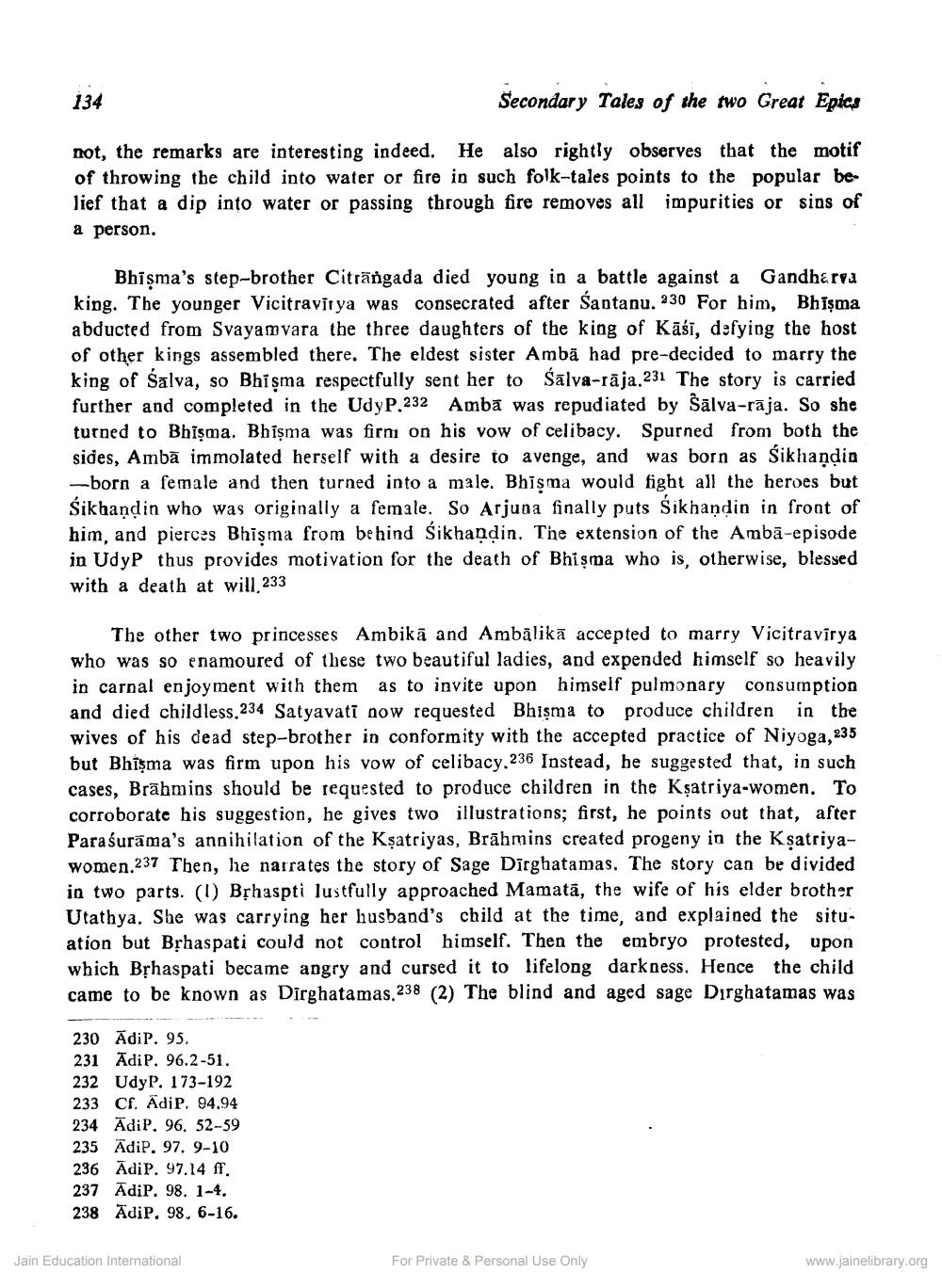________________
134
Secondary Tales of the two Great Epics
not, the remarks are interesting indeed. He also rightly observes that the motif of throwing the child into water or fire in such folk-tales points to the popular belief that a dip into water or passing through fire removes all impurities or sins of a person.
Bhişma's step-brother Citrängada died young in a battle against a Gandharva king. The younger Vicitravit ya was consecrated after Santanu. 330 For him, Bhişma abducted from Svayamvara the three daughters of the king of Kāśi, defying the host of other kings assembled there. The eldest sister Ambā had pre-decided to marry the king of salva, so Bhisma respectfully sent her to sālva-rāja 231 The story is carried further and completed in the UdyP.232 Amba was repudiated by Sālva-rāja. So she turned to Bhişma. Bhişma was firni on his vow of celibacy. Spurned from both the sides, Ambā immolated herself with a desire to avenge, and was born as śikhandia -born a female and then turned into a male. Bhisma would fight all the heroes but śikhandin who was originally a female. So Arjuna finally puts śikhandin in front of him, and pierces Bhisma from behind Sikhandin. The extension of the Ambā-episode in Udyp thus provides motivation for the death of Bhişma who is, otherwise, blessed with a death at will.233
The other two princesses Ambikā and Ambālikā accepted to marry Vicitravīrya who was so enamoured of these two beautiful ladies, and expended himself so heavily in carnal enjoyment with them as to invite upon himself pulmonary consumption and died childless.234 Satyavati now requested Bhisma to produce children in the wives of his dead step-brother in conformity with the accepted practice of Niyoga, 235 but Bhisma was firm upon his vow of celibacy. 236 Instead, he suggested that, in such cases, Brāhmins should be requested to produce children in the Ksatriya-women. To corroborate his suggestion, he gives two illustrations; first, he points out that, after Paraśurāma's annihilation of the Kşatriyas, Brāhmins created progeny in the Ksatriyawomen.237 Then, he narrates the story of Sage Dirghatamas. The story can be divided in two parts. (1) Bphaspti lustfully approached Mamatā, the wife of his elder brother Utathya. She was carrying her husband's child at the time, and explained the situation but Bịhaspati could not control himself. Then the embryo protested, upon which Bphaspati became angry and cursed it to lifelong darkness. Hence the child came to be known as Dirghatamas.238 (2) The blind and aged sage Dirghatamas was
230 AdiP. 95. 231 Adip. 96.2-51. 232 UdyP. 173-192 233 Cf. AdiP. 94.94 234 AdiP. 96. 52-59 235 Adip. 97. 9-10 236 AdiP. 97.14 ff. 237 AdiP. 98. 1-4. 238 AdiP. 98, 6-16.
Jain Education International
For Private & Personal Use Only
www.jainelibrary.org




